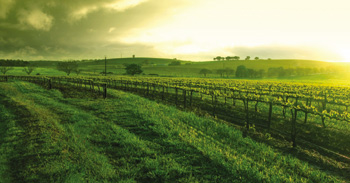Errazuriz seminar
13 October 2008
 Times may be tough but the drinks trade is still enthusiastic, judging by the huge numbers that attended the recent Errazuriz wine education seminar in Dublin. Presented by Errazuriz winemaker Francisco Baettig, it focused on the differences which emerge from the same grape varieties planted in differing soils, differing microclimates or using differing rootstocks.
Times may be tough but the drinks trade is still enthusiastic, judging by the huge numbers that attended the recent Errazuriz wine education seminar in Dublin. Presented by Errazuriz winemaker Francisco Baettig, it focused on the differences which emerge from the same grape varieties planted in differing soils, differing microclimates or using differing rootstocks.
As a Chilean maker, Baettig often hears the charge that Chilean wines are very palatable and good value but essentially all rather the same. There may have been some substance to the charge 10 or 15 years ago when producers were concentrating on getting entry point wines into foreign markets. Moreover, Chile was, and still is, free from the deadly wine pest phylloxera and firm quarantine regulations, put in place to prevent its arrival, impacted on the selection of grapes.
Growers have worked with the authorities to ensure that new varieties and clones can be imported safely into Chile so we are now seeing wines made from a broader range of grapes, including syrah, tempranillo, sangiovese, viognier, and gewurztraminer. Advances in pinot noir production have been striking and Chile is now a notable supplier of good quality, keenly priced pinot, along with some increasingly classical examples.
Until recently production was concentrated in warmer regions. Lately, however, quality labels have begun to focus on cooler climates in the south, such as Bio Bio and Malleco, and coastal regions like Casablanca. The volume push in the past concentrated on lowland vineyards, leaving a lot of fine hill sites unexploited. This, too, is changing, and promises real potential for Chile’s mid and premium wine sector.
The Errazuriz estates have plenty of hills and are already making good use of them. This allows them to offer a huge range of wines, from virtual entry point to fine, icon style wines, and Francisco Baettig was here to show just how much variation there can be, even when the same grape varieties and strains are used. Two sauvignon blancs were tasted, for example, one from coastal Casablanca and the other from slightly cooler climate Manzanar. Though alcohol levels were virtually identical, acidity was higher in the Manzanar example, while pH was lower. The result was a wine which had fewer tropical fruit notes than the Casablanca and was closer to France’s Sancerre in style.
Errazuriz’ Don Maximiano Cabernet is a blend from different batches of grapes and we tried some from the same vintage, one sample having come from fertile soil and the other from a poor one. Though both wines were enjoyable, the one from poorer soil had far better defined blackcurrant flavours and very clean tannins. The wine from fertile soil felt riper but had a softer structure and not as much length.
Nowadays most wine vines are grafted onto American rootstocks, which are phylloxera-resistant. Because Chile doesn’t have phylloxera, a high proportion of vines are still grown on their own rootsocks. We tried merlot from the same clone, with one sample planted on American rootstock and the other ungrafted. Both wines were good but the one on its natural rootstock had the edge in its beautifully defined cherry flavours, light but very supporting tannins and better balanced acidity and alcohol.
Fascinating stuff! So next time you’ve a few friends round why not pick a couple of wines from the same maker and the same grape but from different vineyards and play this diversity game for yourself?
Errazuriz wines are imported by Allied Drinks.




 Print
Print






Fans 0
Followers